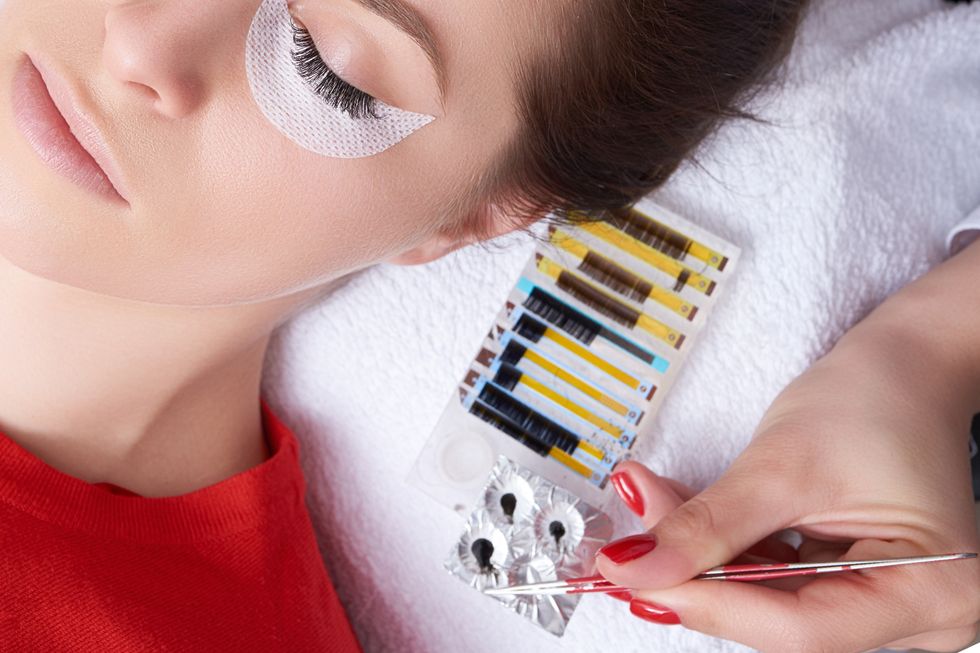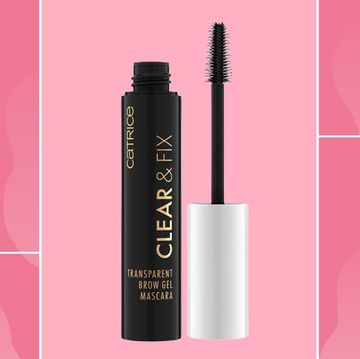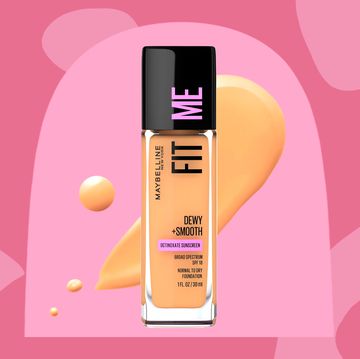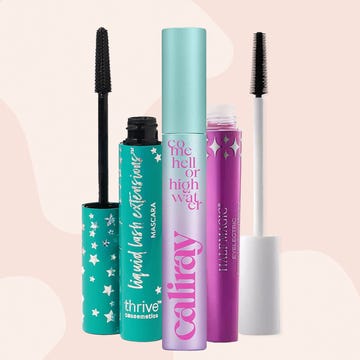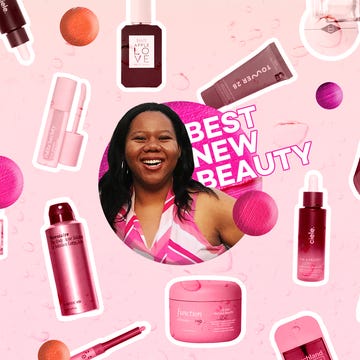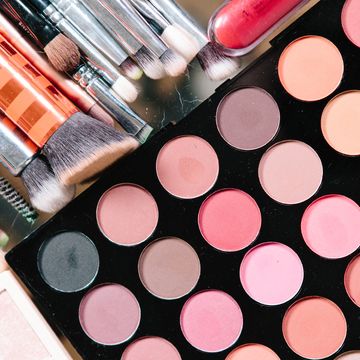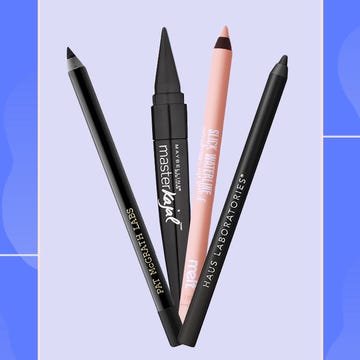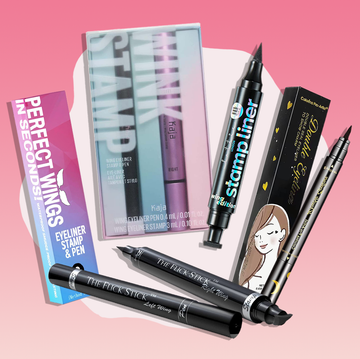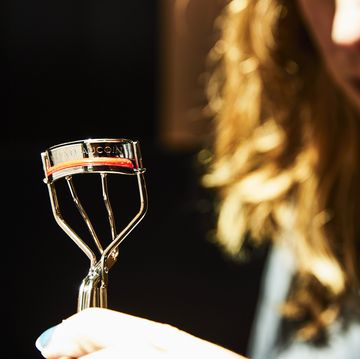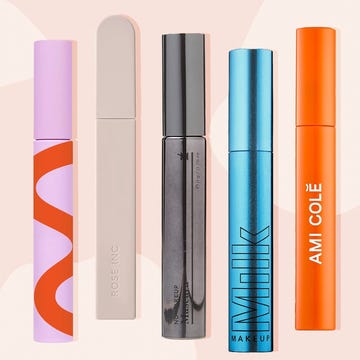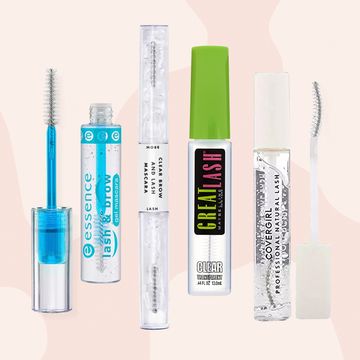Years ago, when eyelash extensions first started gaining popularity, I popped into a local spa for a set without doing any research. Long story short? The outcome wasn't pretty. After studying up on the options, I returned (to a different business!) a few months later, and this time I knew exactly what to ask for. As a result, I've been a happy lash-extension camper who's had them done religiously for years ever since.
Here, I'm compiling a comprehensive list of things you must know before getting eyelash extensions, including how to get exactly what you want during the procedure and how to get the most out of your investment afterward. Read on before your next appointment, and share with any friends who are thinking of having them done.
What Are Lash Extensions?
Individual faux lashes (forget the drugstore strips!) are glued directly onto your real lashes. Typically, only one faux lash is applied to each real eyelash, but anywhere between 50 to 200 lashes total may be used per eye, depending on your desired effect.
What Happens During the Procedure?
The process takes an average of 1.5 hours, and you'll lay flat with your eyes closed the entire time (translation: You'll fall asleep). In general, salons use open areas (not private rooms), but you'll have your own table and may or may not be separated from other clients by a partition of some sort. Your technician will remove your makeup, then use medical tape and/or gel eye patches to secure your lower lashes out of the way before the procedure (because nobody wants their upper and lower lashes accidentally stuck together, right?). She'll then use tweezers to carefully isolate one lash at a time, and then select the perfect faux lash to glue on before moving on to the next lash. In case you were wondering, no, it doesn't hurt!
Picking a Lash Extension Salon
Are lash extensions pricey? Yeah. Expect to pay over $100 for a new set, and closer to $200 in a major city. But that doesn't mean you should just snag the cheapest Groupon and YOLO it, either. These are your eyes, after all, and you must do your research.
Check the Yelp and Google reviews, browse the Facebook and Instagram pages, and make sure the majority of people seem happy and that the client photos look good. Also, it doesn't hurt to pick a salon that's been around a while. If you choose a salon that solely specializes in lash extensions, note that some of the technicians can still be brand-new and freshly trained. Ask for the most senior specialist to be safe.
Mink or Silk Lash Extensions?
When you make your appointment, or at least when you show up for it, you'll be asked what type of lash extensions you'd like. The two primary types of lashes are silk or mink, but don't assume that either one is "real." Most salons use both synthetic silk and synthetic mink, so that's another question to ask (if the price is especially low, the product is likely synthetic). That being said, if you're a vegan or an animal lover, perhaps synthetic material isn't a bad thing to you. In that case, carry on. But real silk tends to be a bit softer and more natural-feeling, while real mink tends to mimic that mascara look for a little more oomph without too much weight.
Lash Length and Shape
Next you'll need to select your length, thickness, and shape. The thickness typically ranges from .10 to .20 millimeters. If you're not sure, go with .10 millimeters for the most natural look. The lengths usually range from .07 to .14 millimeters, and your technician should mix about three different lengths in order to mimic your lashes' natural variation (or to achieve a cat-eye look, for example). Finally, shape is the most confusing decision. Most salons offer J, B, C, and D curls, which really just represents a range of least (J) to most (D) curl. If you like the look of falsies and always curl your lashes, go with C or D. If you want a natural, not-too-obvious look, go with J or B. One caveat, though: I've noticed some salons are not consistent about what J, C, and so on stand for. The easiest way to select the correct curl is to simply tell your technician if you prefer your lashes to look more curled back or natural/straight.
Are Lash Extensions (and the Glue) Safe?
Here's what the FDA says about that: "...eyelash extensions require adhesives to hold them in place. Remember that the eyelids are delicate, and an allergic reaction, irritation, or other injury in the eye area can be particularly troublesome. Check the ingredients before using these adhesives." Vague, right?
Here's what you should know in general: The lash glue should be a medical adhesive, and should obviously never come in contact with your skin or eyes — just your lashes. But it's not contact with the glue as much as breathing in its fumes that you should really consider. That's because medical adhesives contain something called cyanoacrylate, and according to popular lash extension product maker Xtreme lashes, "A completely 'formaldehyde-free' cyanoacrylate adhesive does not exist."
So the most common risk with lash extensions is similar to the hubbub you likely heard over Brazilian blowouts back when they became popular: Beware breathing in the glue fumes, because they may expose you to formaldehyde. Choose a salon with an open, well-ventilated space, and ask your technician to aim a fan so that it blows the fumes away from you as she's working.
Aftercare for Lash Extensions
For the first 24 hours especially, you shouldn't get your extensions wet. This can soften the glue and cause them to shed prematurely. You also won't be able to use any oil-based products (e.g. my beloved Lancome Bi-facil eye makeup remover) for as long as you have the lashes, so consider that as well. Most lash extension "regulars" like me rely on oil-free eye makeup remover wipes to carefully remove makeup around your extensions. You'll have to learn a whole new way to wash your face (no splashing on water like a Neutrogena commercial, OK?!), but it'll be worth it. You'll also need to use that little spooly brush they give you to brush your extensions either every day or every few days. The proper technique? Close your eyes and place the brush above your lashes, just below where the adhesive is. Gently twirl the brush down and out to straighten and detangle your lashes. Don't simply swipe the brush from root to tip from below your lashes (a common mistake!), as this can bend the lash extensions back and pull them away from your natural lashes.
You'll need to get a refill after 2-4 weeks, or pay to have your remaining lashes removed if you choose to wait it out and go in for a whole new set after 6-8 weeks. However, you'll wake up with dark, long, perfectly curled lashes every day, and a quick run to the supermarket becomes a whole lot more glamorous, without a single minute spent applying makeup in the morning. For some, this makes it all worth it (and so addictive!), while for others, it just seems like too much of a hassle. Once you find a salon you like, you may be able to purchase a package or get a discount after a certain number of visits, making the entire thing a bit more affordable.
So, the final verdict: If you're someone who doesn't mind putting in some extra effort for the sake of stunning lashes, you'll be on board with eyelash extensions. If spending the extra time and money is not for you, try one of these DIY lash products below instead:
More Like This:
Waterproof Mascaras for Lasting Glam
Why You Need a Lighted Makeup Mirror
10 Drugstore Eyeliners That Won't Let You Down
Follow BestProducts.com on Facebook and Pinterest for all the latest products!

